Climate Art Beat℠
Winter/Spring Calendar
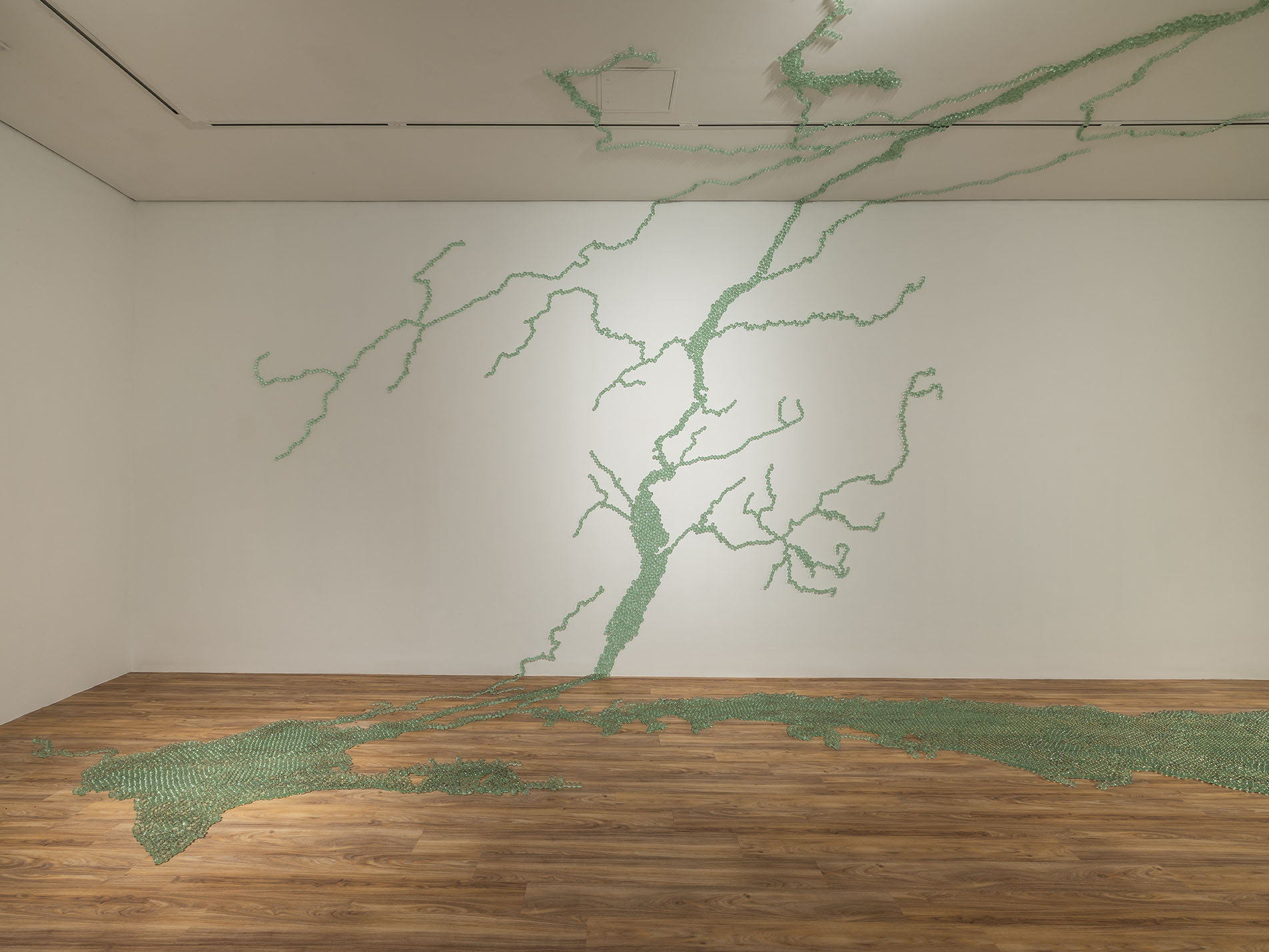
Maya Lin, Folding the Hudson (2018). Glass marbles, adhesive. Dimensions: 11’ x 20’3” x 35’6.” ©Lin, 2018. Courtesy of the artist. On exhibit at the Hudson River Museum. Photograph by Kris Graves.
We are pleased to highlight these 13 pioneering climate art events.
Chicago, IL

James Balog, Blue Ponds Formed by Meltwater in Alaska’s Columbia Glacier (left) and Meltwater River Formed by Glacier Melt in Greenland (right). Photographs. ©2014 James Balog/Extreme Ice Survey. Courtesy of the artist and Museum of Science and Industry.
Museum of Science and Industry
Extreme Ice captures the immediacy of climate change with James Balog’s visually stunning photographs and time-lapse videography of melting glaciers. To illustrate the physical and technological challenges Balog and his team had to overcome to gather this compelling footage, the exhibition displays their customized camera, expedition equipment, and a touchable 7-foot tall ice wall.
Now to Nov., 2020
Yonkers, NY
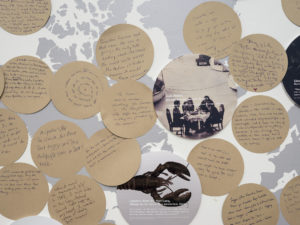
What Is Missing? (detail). Interactive submission alcove. ©Lin, 2018. Courtesy of the artist and the What Is Missing? Foundation. Photograph by Kris Graves.
Hudson River Museum
A River Is A Drawing showcases 12 of Maya Lin’s new and site-specific artworks focused on rivers, especially the Hudson, as the “lifeblood” of civilization. The exhibition invites viewers to contribute personal memories of how the river has changed over time and to reflect on how we can protect the river from the adverse impacts of climate change.
Now through Jan. 20, 2019
Washington, DC
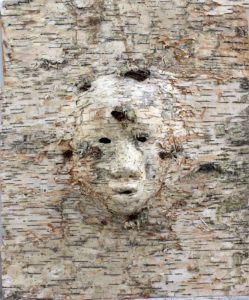
Mary Jane Piccuirro, Spirit of the Forest mask (2018). Recycled paper and birch bark from the forest floor. ©Piccuirro, 2018. Courtesy of the artist.
Smithsonian Craft Show
Exhibitors representing the finest American design and craft artists are invited to vie for the Honoring the Future Sustainability Award, presented annually to the artist whose work best educates the public about, or inspires or models a sustainable response to, climate change. Last year’s winner, Mary Jane Piccuirro, was selected from 17 contenders whose works illustrate why we need climate action and how we can achieve it.
April 25 – 28, 2019
Milwaukee, WI
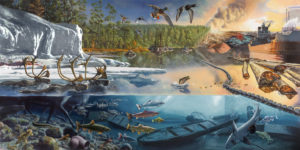
Alexis Rockman, Cascade (2015). Oil and alkyd on wood panel. Dimensions: 72” x 144”. Collection: Grand Rapids Art Museum, 2015.19. © 2015, Alexis Rockman. Courtesy of the artist.
Haggerty Museum of Art, Marquette University
The Great Lakes Cycle, a solo exhibition of Alexis Rockman’s paintings, watercolors and field drawings, explores the past, present and future of the Great Lakes and the challenges they face from climate change and human pollution. This exhibition is part of a 5-state tour, which includes Cleveland, OH (below).
Feb. 8 – May 19, 2019
Houston, TX
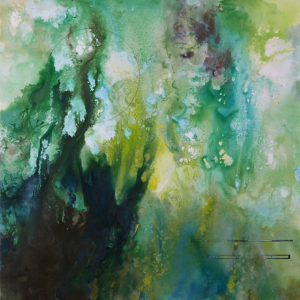
Diane Burko, Molokai (2018) Acrylic on canvas. Dimensions: 42″ x 42.” ©Burko, 2018. Courtesy of the artist and the National Academy of Sciences.
Cindy Lisica Gallery
Endangered, a solo exhibition of Diane Burko’s paintings, prints and video, continues and deepens the artist’s exploration of two major impacts of climate change: the dramatic disappearance of glaciers and the destruction of coral reefs. Initial works in this series debuted to acclaim at the National Academy of Sciences in Washington DC (below).
May 3 – June 8, 2019
Blacksburg, VA

Eric Serritella, Electorate (2017). Ceramic trompe l’oeil. Dimensions: 12”h X 27” x 7”. ©2017 Eric Serritella. Courtesy of the artist.
Moss Arts Center, Virginia Tech
In Arboreal, artists from 4 continents explore the beauty, importance and increasing vulnerability of trees, a potent line of defense against climate change. The exhibition includes trompe l’oeil ceramic sculptures by Eric Serritella, who hopes his work will inspire humans to “walk with softer steps” on the earth.
Jan. 24 – March 23, 2019
Easton, PA
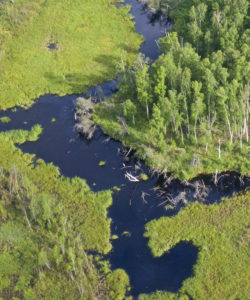
Peter Handler, Aerial View of Drunken Forest on the Tanana Flats (2015). Photograph. ©Handler Studio 2015.
Nurture Nature Center
Honoring the Future partners with the Center to host Alaskan Journey: Artists Respond to Climate Change. This exhibition showcases work by two Pennsylvania artists, who traveled to Alaska to meet with scientists, examine the impacts of climate change, and paint and photograph what they saw. From April 15 – May 15, 2019, visitors can don VR headsets to watch Let’s Explore, a 360° virtual reality film on climate change.
April 15 – June 20, 2019
Los Angeles, CA
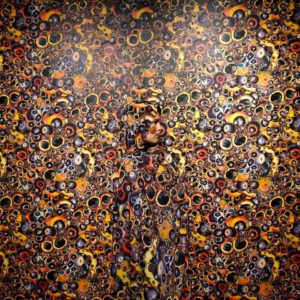
Jenny Kendler, Bewilder (Deimatic Eyespot Camouflage) (2016). Installation on eco-friendly wallpaper and fabric. ©Jenny Kendler, 2016. Courtesy of the artist. Photograph (self-portrait) by Jeska Ridell.
Los Angeles County Arboretum and Botanic Garden
In Digital Nature 2019, 20 artists explore the ecological and technological shifts remaking our world. Jenny Kendler’s Bewilder invites visitors to photograph themselves in front of a photo collage of thousands of butterfly and moth eyespots. The eyespots are thought to confuse predators. The installation encourages humans to allow themselves to be bewildered by nature and to see – and be seen – in more open, caring ways.
Feb. 27 – Mar. 3, 2019, 6:00 – 9:00 pm
Chevy Chase, MD
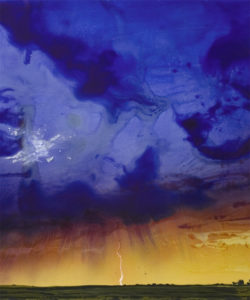
Alexis Rockman, Blue Storm (detail) (2006). Oil on gessoed paper. Dimensions: 51” x 75.25”. © Alexis Rockman 2006.
Audubon Naturalist Society, Woodend Sanctuary
For Climate Art and Action, Honoring the Future partners with the Audubon Naturalist Society to feature photographs of the work of 10 pioneering climate artists and to offer climate solutions responding to the artworks. Visitors can also don headsets to watch Let’s Explore, a 360° virtual reality film on climate change.
March 1 – 15, 2019
Cleveland, OH

Alexis Rockman, Spheres of Influence (2016). Oil and alkyd on wood panel. Dimensions: 72” x 144”. Collection of Jonathan O’Hara Gallery. © 2016, Alexis Rockman. Courtesy of the artist.
Cleveland Museum of
Contemporary Art
The Great Lakes Cycle, a solo exhibition of Alexis Rockman’s paintings, watercolors and field drawings, explores the past, present and future of the Great Lakes and the challenges they face from climate change and human pollution.
Now through Jan. 27, 2019
Ottawa, CN
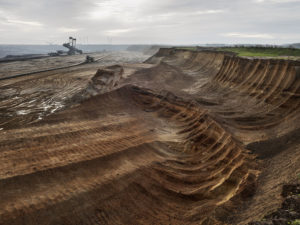
Edward Burtynsky, Coal Mine #1, North Rhine, Westphalia, Germany, 2105. Pigment inkjet print. Dimensions: 58 1⁄2” x 78.” © Edward Burtynsky, 2017. Courtesy of the artist and Nicholas Metivier Gallery, Toronto.
National Gallery of Canada
Anthropocene tells the story of human impact on the earth through film, photography, and augmented reality (AR) installations. Works by Edward Burtynsky, Jennifer Baichwal and Nicholas de Pencier examine why an international group of scientists proposes to rename our present geological epoch, characterized by unprecedented human influence on the planet, the “Anthropocene” or “Human Epoch.”
Now through Feb. 24, 2019
Washington, DC
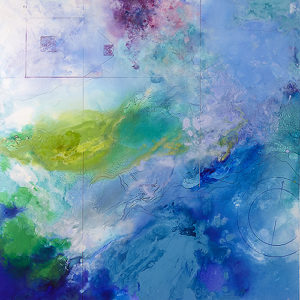
Diane Burko, Faga’alu (2018) Acrylic on canvas. Dimensions: 60″ x 60.” ©Burko, 2018. Courtesy of the National Academy of Sciences.
National Academy of Sciences
Endangered: from Glaciers to Reefs, solo exhibition of Diane Burko’s paintings, prints and video, documents two major impacts of climate change: the dramatic disappearance of glaciers and the destruction of coral reefs.
Now through Jan. 31, 2019
Salt Lake City, UT
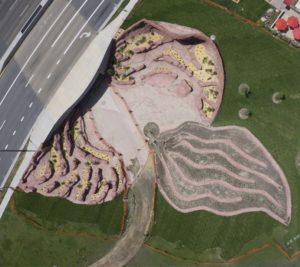
Patricia Johanson, Sego Lily Dam. Aerial photo of completed dam. ©Patricia Johanson, 2018. Courtesy of the artist.
The Draw at Sugar House
Patricia Johanson’s Sego Lily Dam may well be the world’s first flood control project designed as a work of art. Floodwater pools in the “bowl” of the flower with its 30-foot high walls, then flows by gravity under an 8-lane highway, through a sunken corridor (the lily’s “stem”) and into a creek.
Permanent Installation
